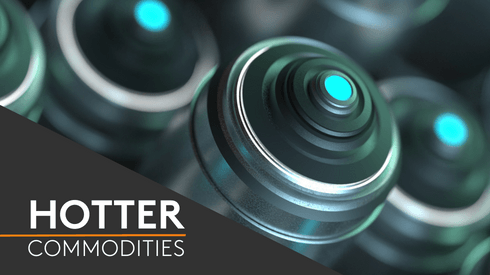Struggling global economies
Large metal consuming and producing economies such as China and Germany have struggled throughout this year, stoking bearish sentiment across a wide variety of different metals.
Governments have announced stimulus measures, some targeting electric vehicles (EVs). Such measures have also led to short-term volatility.
High interest rates lead to challenging trading environment
Higher interest rates have led to weaker demand for metals, such as copper, globally. It has also led to tougher conditions for merchants to operate in, due to higher financing costs and weaker margins.
Fluctuating currencies
Currency fluctuations have been a key influencing factor across steel and alloys markets in recent months, with movements in major currencies like the rand, the yuan and the lira lending further uncertainty to already volatile markets.
Weaker price environment has led to funding stoppages, potential supply cutbacks
Weak prices for metals such as nickel have led mining company Glencore to stop funding of its Koniambo Nickel SAS project in New Caledonia. The company also said earlier in the year it would consider stockpiling and production cuts due to weak cobalt prices.
Western raw material policy under the spotlight
Countries looking to meet their mandates for decarbonization have enacted policies throughout the year to incentivize more localized supply chains, especially in battery raw materials. The US’s Inflation Reduction Act and Europe’s Critical Raw Materials Act are two such policies expected to be heavily discussed in long-term supply deals.
What’s deemed as critical raw materials to the EU could extend outside of materials used in battery raw materials and into markets such as ferrous scrap, a key material to establishing a more circular economy.
China tightens critical raw material export
China is focusing on clamping down on critical raw materials export. Several exporters have reported obtaining licenses to ship gallium out of China in the past two weeks, after the country’s gallium and germanium export controls came into effect on August 1.
Gallium and germanium share a host of high-tech applications, from fiber optic cables and 5G telecommunications masts to military-grade thermal imaging, lasers, light-emitting diodes (LEDs), satellite solar panels and rare-earth magnets in the engines of electric vehicles (EVs).
Low Carbon differentials remain in focus
Differentials for lower carbon material remain in focus heading into this year’s LME week. In aluminium, Fastmarkets is proposing to launch two low-carbon differentials for value-added products while the market continues to develop.
Fastmarkets also launched a new “green” steel premium to aid the decarbonization drive in Asia.
Volatility persists in battery raw materials
Battery raw materials have so far had a volatile year, with the price of many of them coming off record highs in 2022. Cobalt in particular faces volatility heading into the end of the year, with prices recovering throughout early October but still facing oversupply in the longer term.
Evolving contract structures in lithium
Market participants negotiating 2024 supply contracts in lithium are seeing an evolution in long-term contract structures. Historically, lithium long-term contracts were signed on a fixed basis. But with volatility in lithium prices in 2022 and a lower likelihood of lithium prices returning to levels seen that year, market participants are looking to sign longer-term index-linked prices.
Hedging options grow with battery raw material volatility
The rise of lithium derivatives also means that market participants with long-term contracts can directly hedge volatility on those deals.
Open interest in the Chicago Mercantile Exchange’s lithium hydroxide contract, which is based on Fastmarkets’ lithium hydroxide CIF China, Japan and Korea price, surpassed 7,500 lots on September 29.
There are also more options to hedge lithium carbonate supply now. For example, the CME launched its cash-settled lithium carbonate contract, which is settled against Fastmarkets’ assessment of battery lithium carbonate CIF China, Japan & Korea, on July 17.
Keep track of insights and discussions shared during LME Week in our LME Week content hub.






